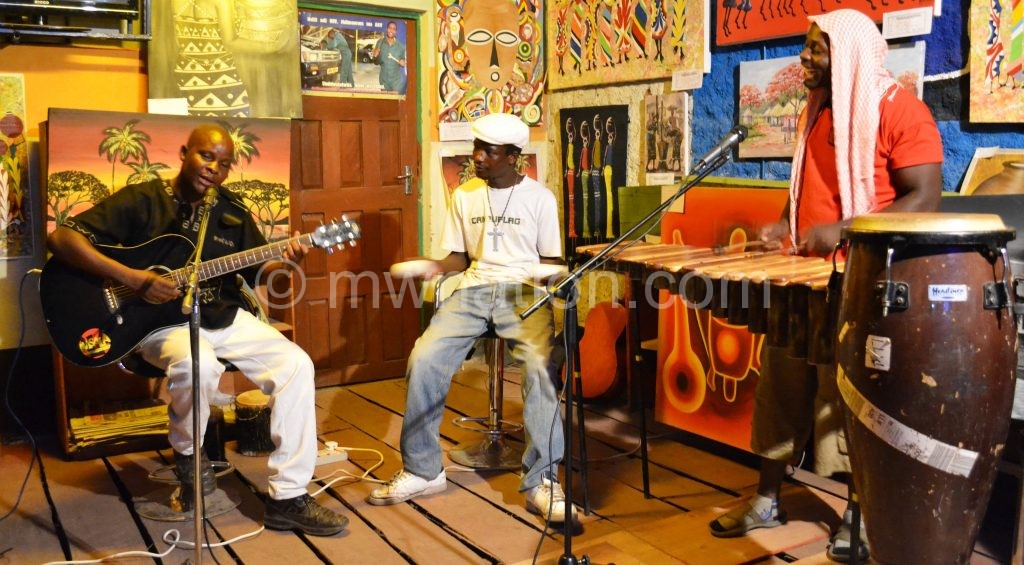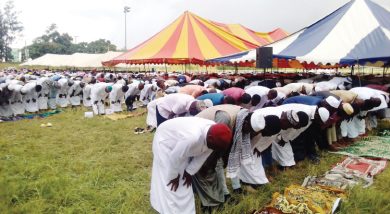Art redefining culture
A lot has been said and written about a ‘hyena’ in Nsanje. A BBC report recently opened debate on the sexual ritual cleansing practice in the Lower Shire, where a sex worker known as a ‘hyena’ (fisi) is paid to have sex with girls once they reach puberty or widows.
The issue dominated discourse especially when President Peter Mutharika ordered the arrest of the ‘hyena’, Eric Aniva, who was featured in the article for boasting to have cleansed over 104 women and girls. Aniva is still in custody and his case has not come for trial, after a presiding magistrate recused himself.

It was a first for such an issue to dominate the public sphere in the country although artists have covered the issue extensively in their artworks for many years.
For instance, visual artist Massa Lemu had a collaborative exhibition of paintings and poetry tilted The Scourge is also a Mask on aspects of Malawian culture that he did with Chancellor College lecturer Timwa Lipenga in 2007.
Later, the renowned writer the late Professor Steve Chimombo wrote extensive critical reviews of the exhibition which were featured in his book titled Aids, Artists and Authors. Apart from the exhibition, Chimombo looked at how writers, musicians and visual artists linked culture, religion and other aspects of Malawi society to Aids.
Apart from that, Chimombo has done several pieces on fisi and other harmful traditions that expose girls to the virus. Some of these include Sister! Sister! and The Hyena Wears Darkness.
Musicians have also done several songs that discourage the masses from indulging in harmful cultural practices. Nsanje-born artist Agorosso has done songs like Kulowa Kufa from his 2013 album Samba and a single Meliya.
Even the media, as others have observed before, has reported about the issue for many years. Such efforts, one would argue, have failed to move the hand of power to react to the harmful cultural practices just as it has done after the BBC report.
This invites several questions on the relevance of arts in the changing world where the creative sector ought to effect change on society, especially on harmful cultural practices.
As artists, how do they feel that their voices are not being heard on various dangerous practices? What is the role of the artist in bringing out harmful cultural practices? What can be an art critic or academic view on the same?
Agorosso thinks artists in Malawi have done enough to bring out harmful cultural practices to the attention of various interested parties for address.
He says the harmful practices have been on the dying bed through their works of art which discourage communities against undertaking such practices.
“The problem is that the BBC didn’t research properly. They rushed in exposing the story. Fisi is a dying practice in Nsanje. And Aniva is just one of the few ‘hyenas’ remaining.
“A lot of people abandoned the practice due to messages we have been preaching through songs and other media,” said Agorosso.
Lemu says the role of the artist is to celebrate or critique culture. However, he says artists are limited in reaching out to the public as it takes time for them to be understood due to barriers between an artist and the audience.
“The artist might glorify some cultural practices but also ask questions in order to start conversations on the tenability of other cultural practices, particularly the ones deemed harmful.
“By doing so, an artist can have great influence on how her society thinks about its culture. In this sense, an artist can greatly shape the culture of her society.
“But there are also limits. For example, in ‘The Scourge is also a Mask’ I did a few years ago with Timwa Lipenga was unfortunately accessible only to those who could go to art galleries. Even reviews done by Chimombo could only be accessed by the literary minded,” explains Lemu.
Among the paintings he did was one showing an old man, seemingly proud of his did, with a hut in the background and a girl, his victim, crying in the foreground. Any discerning eye can tell the man was proud to have been engaged as a fisi to ‘dust’ the girl after her first menses.
Lemu, therefore, argues that it is the role of the art critic, the academic, or the journalist to read and interpret the work of the artist.
“Most often, the artist is only interested in making art and provoke debate. The critic endeavours to glean meaning from the work using the intellectual tools that are available to him. It is more exciting when both the artist and the critic are eager to wander off into uncharted territories.
“So, in such scenarios it’s only after some time and a great amount of effort that the knowledge in the form of the exhibition and the reviews, is unpacked (through viewings, readings, interpretations, and discussions, whether in the classroom or beyond) and is accessible to a larger audience. This is one of the ways the artist’s ideas percolate and infiltrate society for better or for worse!” he says.
The artist challenges views that artists’ critical voices on culture are not being heard, arguing that ‘more and more people are being exposed to art through the festivals that are being held in different parts of the country, through TV and the Internet’. n





